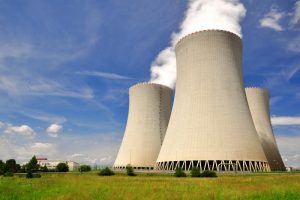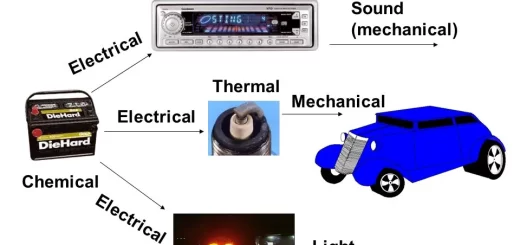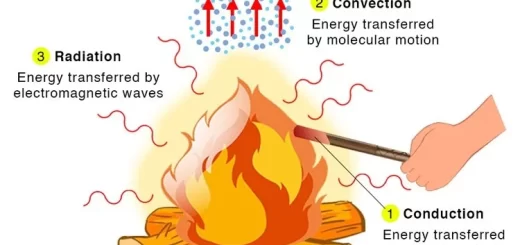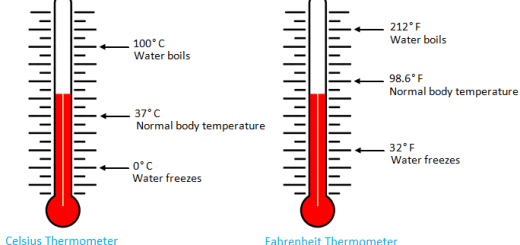Radioactivity, Nuclear Energy, radioactive elements and fields of using the nuclear energy
The mass of the atom is concentrated in the nucleus because the mass of electrons is negligible compared with the mass of protons and neutrons in the nucleus. Binding the atom‘s nucleus although it has a repulsion force due to nuclear binding force which overcomes the repulsion force between protons.
What is meant by radioactivity?
All elements consist of atoms. The atom consists of a nucleus surrounded by electrons revolving around it in certain energy levels: The mass of the atom is concentrated in the nucleus which contains protons and neutrons.
The composition of the atom is responsible for the physical and chemical properties of the element, where chemical reactions between atoms occur through their outermost electrons, while nuclear reactions occur due to the change in the number of protons and neutrons inside the nucleus.
Nuclear energy
Nuclear energy is stored in the atom’s nucleus.
The origin of the nuclear energy
The nuclei of the atoms of the stable element are coherent although the presence of repulsion force inside them due to the presence of nuclear-bunding forces that originated inside the nucleus, and act on:
- Binding the nucleus components together.
- Overcoming the repulsion forces that are present between the positively charged protons and each other.
Nuclear binding forces are the forces that are necessary to bind the nucleus components together and overcome the repulsion forces that are present between the positively charged protons and each other.
The nuclear binding forces are considered as the source which provides the atom with a huge energy which is called nuclear energy, so the atom’s nucleus is considered as the energy store.
Radioactivity phenomenon
The discovery of the radioactivity phenomenon:
Radioactivity was discovered by a French scientist, Henri Becquerel in 1896, He discovered the emission of unseen rays from the uranium element, these rays have the ability to penetrate solid objects. After that, he named these elements (as uranium) by Radictive elements and this phenomenon by “Radioactivity phenomenon.
What is meant by Radioactivity?
In the periodic table, there are some atoms of elements, their nuclei have a suitable number of neutrons that make them stable, But others have a number of neutrons more than the number required for its stability that makes them unstable due to its excess energy, And these elements are known as “Radioactive elements”. Radioactive elements are elements whose atoms nuclei contain a number of neutrons more than the number required for its stability.
Examples of some radioactive elements
Some radioactive elements such as Radium, Cesium, Selenium, Polonium, Rubidium, Zirconium & Uranium. Therefore: The atom’s nuclei of radioactive elements emit Invisible radiations as Alpha particles, Beta particles, Gamma radiations automatically to get rid of the excess energy to achieve a more stable composition, This process is known as the “Radioactivity phenomenon (natural radioactivity)”.
Radioactivity phenomenon is the spontaneous decay of atoms nuclei of some radioactive elements that are present in nature, in an attempt to achieve a more stable composition.
When the number of neutrons in the atom of the nucleus of an element increases more than the number required for its stability, Its energy will increase, so the atom‘s nucleus emits invisible radiation to achieve a more stable composition.
Uranium element is considered a radioactive element because its atom‘s nucleus contains a number of neutrons more than the number required for its stability, which leads to the presence of excess energy that releases in the form of invisible radiation.
The nuclei of radioactive elements are unstable due to their excess energy as a result of their atoms’ nuclei containing neutrons more than required for their stabilization.
Artificial radioactivity
There is another type of radioactivity which is known as artificial radioactivity which is the radiation of nuclear energy that is released during nuclear reactions, which either:
- Can be controlled like these which are done in nuclear reactors and are used for safe uses.
- OR, Cannot be controlled like these which are done in nuclear bombs and are used in military uses.
Artificial radioactivity is the radiation or nuclear energy that is released during nuclear reactions either from nuclear reactors or from nuclear bombs.
In the second world war, on August 6, 1945, an American aeroplane dropped the first atomic bomb on the Japanese city of Hiroshima, eventually killing over 140.000 people. On August 9, 1945, the United States of America dropped the second atomic bomb. this time in another Japanese city of Nagasaki, it killed 75,000 people.
Radioactivity has natural sources and also artificial because there are natural radioactivity which is produced from the radioactive elements present in nature and cosmic radiation that comes from outer space, and artificial radioactivity which is produced from nuclear reactions and nuclear bombs.
The peaceful uses of nuclear energy
Scientists were interested in controlling the amount of energy released from nuclear reactions, therefore it can be used in peaceful uses in many fields, as shown in the following diagram:
The fields of using the nuclear energy
- Medical field: To diagnose and treat diseases like cancer.
- Agricultural field: To eliminate pests and to improve some plants races.
- Industrial field: To convert sand to silicon sheets which is used in manufacturing computer processors and programmed electric circuits that are used in electric appliances, and to discover defects in the manufactured products.
- Nuclear energy is used in the electricity generation field to heat water to produce steam, This steam is used to operate turbines to generate electricity.
- Space exploration field: The radioactive materials are used as nuclear fuel for rockets that fly in space.
- Drilling field: Drilling for petroleum and underground water.
Dr. Aly Mostafa Meshrafa is an Egyptian scientist, who was described by Einstein (one of the greatest physicists in the world). Dr. Aly Mostafa Moshrafa has great theories in the fields of atoms and radiation.
The basics of manufacturing the atomic bomb were based on his theories. He gave his objection to the development of atomic bombs, and called for the necessity of exploiting the atom and radiation for the benefit of humanity.
Radiation pollution sources, radioactive wastes & how to protect yourself from radiation pollution
Radioactivity, Nuclear reactions (Natural transformation of elements) & Half-Life time
Nuclear Transformation , Nuclear fission bomb and Nuclear fission reactor
Nuclear power (nuclear fission) advantages and disadvantages




